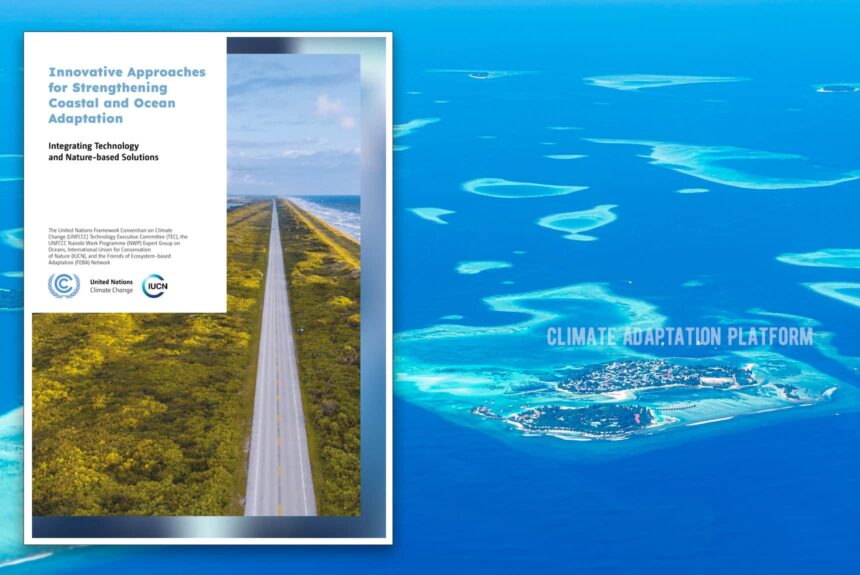Progressive impacts and challenges of climate change require coastal and ocean-dependent communities to adapt urgently.
Traditional adaptation strategies are no longer sufficient to protect them; instead, they would need innovative adaptation approaches that combine technology and nature-based solution to enhance their resilience to gradually increasing climate threats.
The policy brief, “Innovative Approaches for Strengthening Coastal and Ocean Adaptation, Integrating Technology and Nature-based Solutions”, summarizes actions and recommendations for scaling up innovative approaches to achieve multiple benefits for people and nature.
The findings are based on the outcomes of a series of events on integrated adaptation approaches organized by the UNFCCC Technology Executive Committee (TEC), UNFCCC Nairobi Work Programme (NWP) Expert Group on Oceans, International Union for Conservation of Nature (IUCN), and the Friends of Ecosystem-based Adaptation (FEBA) Network in 2021 as part of Technology Day (UNFCCC and IUCN, 2022).
According to the report, more than 600 million people live in coastal zones that are less than 10 meters above sea levels making many coastal communities and Small Island Developing States (SIDS) highly vulnerable to both the slow on-set climate change events like sea-level rise, coastal erosion, warming the ocean temperatures and the ocean acidification, and fast-onset hazards, including extreme weather events such as storm surges and tropical cyclones.
These impacts are worsened by the corresponding challenges of pollution, ecosystem degradation, and unsustainable use of resources, reducing the capacity of coastal ecosystems to protect communities against storm surges and tropical cyclones and provide food and livelihood.
Faced with these multiple threats, coastal communities need to implement effective adaptation strategies.
The report catalogues innovative adaptation approaches that are implemented worldwide, which include:
- Ecosystem-based adaptation (EbA) and Ecosystem-based disaster risk reduction (Eco-DRR) are currently implemented worldwide;
- Hybrid approaches that combine ecosystem-based and engineered adaptation approaches with a broad emphasis on sustainable development in densely populated coastal zones;
- Early warning systems (EWS) to forecast, detect, and help communities prepare and respond to emergencies and changes in the local environment;
- Cross-sectoral approaches that bring diverse stakeholders together to plan and manage coastal and marine areas, and
- Coastal hazard and flood risk mapping models risk to coastal communities and inform management decisions.
The report also presents the gaps and challenges that hinder the widespread implementation of these actions and provides recommendations on how to accelerate the uptake and scale up these innovative approaches.
To read the entire report, click the link in the “Source” below.
Source:
UNFCCC and IUCN. 2022. Innovative Approaches for Strengthening Coastal and Ocean Adaptation – Integrating Technology and Nature-based Solutions. United Nations Climate Change Secretariat. Bonn. Retrieved from https://unfccc.int/ttclear/misc_/StaticFiles/gnwoerk_static/2020_coastalzones/6b21319a3b9b4da3ac693a751f2f1cf5/6d16eef959ae429abeb65b6ca13e7213.pdf



Leave a Reply